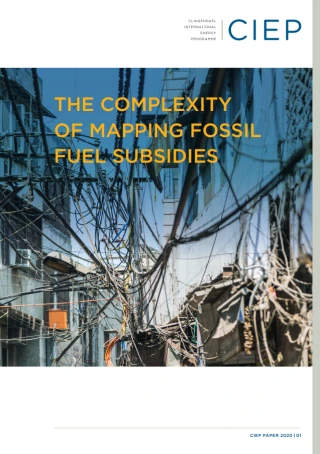
The Complexity of Mapping Fossil Fuel Subsidies
- Publication:
- CIEP, September 2020
The topic of fossil fuel subsidies is frequently discussed in the media and in politics. With regard to the energy transition to a low carbon economy, the topic is more relevant than ever. Since 2009, international political attention increased when the G20 meeting in Pittsburgh agreed to remove inefficient fossil fuel subsidies before 2020.
Following the G20 meeting in Pittsburgh several major institutions published their insights and findings on the matter, ranging from the IEA to the OECD and the IMF, assessing the situation worldwide. Other international institutions had also already reported about these practices beforehand. Furthermore, the World Bank and UNEP contributed to the understanding of the matter, by publishing on definitions and offering guidelines.
The studies show a great deal of variety in their approaches and therefore also in the statistics with which they underpin their conclusions. In the public debate it is not always well understood how the differences in outcomes of studies and reports come about, and, more importantly, how they fit within the discussion on (inefficient) fossil fuel subsidies.
This study, commissioned by the Dutch Ministry of Economic Affairs and Climate Policy, sets out to explain some of the basic choices that are involved when assessing the various approaches taken for measuring and estimating fossil fuel subsidies.
See for the letter to Parliament of Minister Wiebes on Financial Incentives for Fossil Fuels in the Netherlands and the other reports/attachments to the letter:
https://www.tweedekamer.nl/kamerstukken/brieven_regering/detail?id=2020Z16289&did=2020D35139





